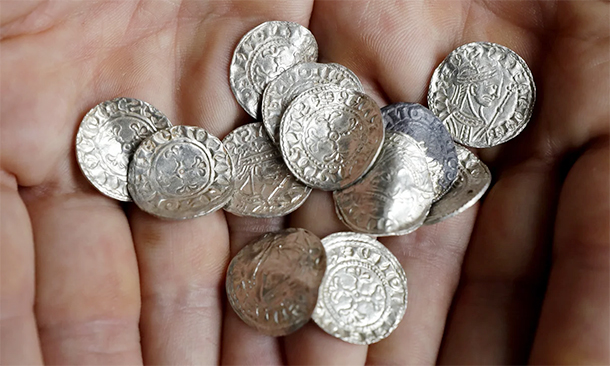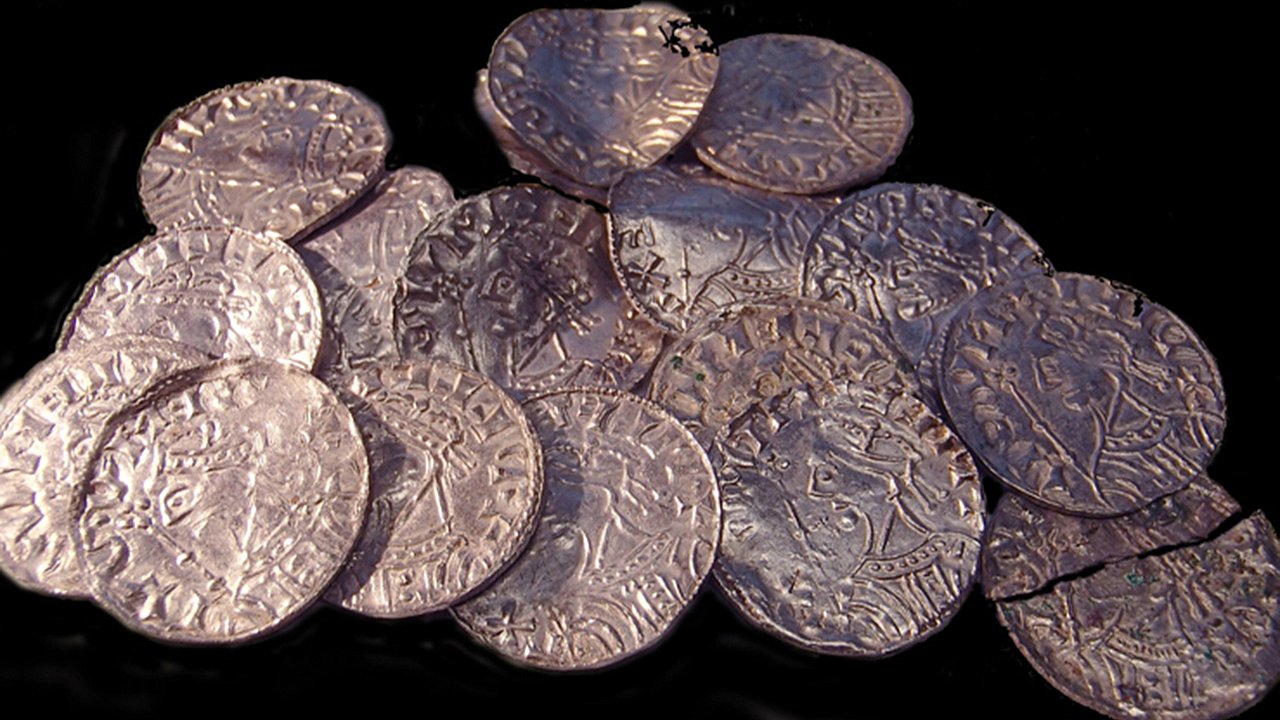The discovery captures one of the most pivotal moments in English history: the Norman Conquest. The oldest coin in the hoard depicts King Edward the Confessor, who died in early 1066 without an heir, leaving England’s throne contested by multiple rivals, including Harold Godwinson, Earl of Wessex; Harald Hardrada, King of Norway; and William, Duke of Normandy.A Snapshot of Turbulent Times
After being crowned King Harold II, Godwinson was immediately forced to defend his claim to the throne. Though he defeated Harald Hardrada at the Battle of Stamford Bridge, Harold II was ultimately killed at the Battle of Hastings by William the Conqueror in October 1066, changing the course of English history forever. The coins reflect this historical shift, with roughly half of them bearing the image of Harold II and the rest depicting William I. Experts believe the hoard was likely buried for safekeeping between 1067 and 1068 during a period of unrest in southwestern England, including a rebellion in Exeter and raids launched by Harold’s exiled sons along the River Avon and into Somerset.Amal Khreisheh, curator of archaeology at the South West Heritage Trust, emphasized the significance of the find, saying, “This hoard encapsulates the moment England transitioned from Saxon to Norman rule. It offers a unique glimpse into the turmoil of that era.”A Rare and Historic Treasure
The coins reflect this historical shift, with roughly half of them bearing the image of Harold II and the rest depicting William I. Experts believe the hoard was likely buried for safekeeping between 1067 and 1068 during a period of unrest in southwestern England, including a rebellion in Exeter and raids launched by Harold’s exiled sons along the River Avon and into Somerset.Amal Khreisheh, curator of archaeology at the South West Heritage Trust, emphasized the significance of the find, saying, “This hoard encapsulates the moment England transitioned from Saxon to Norman rule. It offers a unique glimpse into the turmoil of that era.”A Rare and Historic Treasure
Finding such well-preserved coins from this era is rare, particularly those dating from Harold II’s short reign. In fact, this hoard contains twice the number of Harold II coins previously known to exist. The coins will be on display at the British Museum in London starting November 26 before being sent to museums in southwest England for public viewing.A treasure hoard of 2,584 silver coins, discovered in the Chew Valley, has become Britain’s most valuable treasure find, revealing a rare glimpse into the Norman Conquest and the turbulent events of 1066-1068.
After being crowned King Harold II, Godwinson was immediately forced to defend his claim to the throne. Though he defeated Harald Hardrada at the Battle of Stamford Bridge, Harold II was ultimately killed at the Battle of Hastings by William the Conqueror in October 1066, changing the course of English history forever.
 The coins reflect this historical shift, with roughly half of them bearing the image of Harold II and the rest depicting William I. Experts believe the hoard was likely buried for safekeeping between 1067 and 1068 during a period of unrest in southwestern England, including a rebellion in Exeter and raids launched by Harold’s exiled sons along the River Avon and into Somerset.Amal Khreisheh, curator of archaeology at the South West Heritage Trust, emphasized the significance of the find, saying, “This hoard encapsulates the moment England transitioned from Saxon to Norman rule. It offers a unique glimpse into the turmoil of that era.”A Rare and Historic Treasure
The coins reflect this historical shift, with roughly half of them bearing the image of Harold II and the rest depicting William I. Experts believe the hoard was likely buried for safekeeping between 1067 and 1068 during a period of unrest in southwestern England, including a rebellion in Exeter and raids launched by Harold’s exiled sons along the River Avon and into Somerset.Amal Khreisheh, curator of archaeology at the South West Heritage Trust, emphasized the significance of the find, saying, “This hoard encapsulates the moment England transitioned from Saxon to Norman rule. It offers a unique glimpse into the turmoil of that era.”A Rare and Historic TreasureFinding such well-preserved coins from this era is rare, particularly those dating from Harold II’s short reign. In fact, this hoard contains twice the number of Harold II coins previously known to exist. The coins will be on display at the British Museum in London starting November 26 before being sent to museums in southwest England for public viewing.A treasure hoard of 2,584 silver coins, discovered in the Chew Valley, has become Britain’s most valuable treasure find, revealing a rare glimpse into the Norman Conquest and the turbulent events of 1066-1068.








